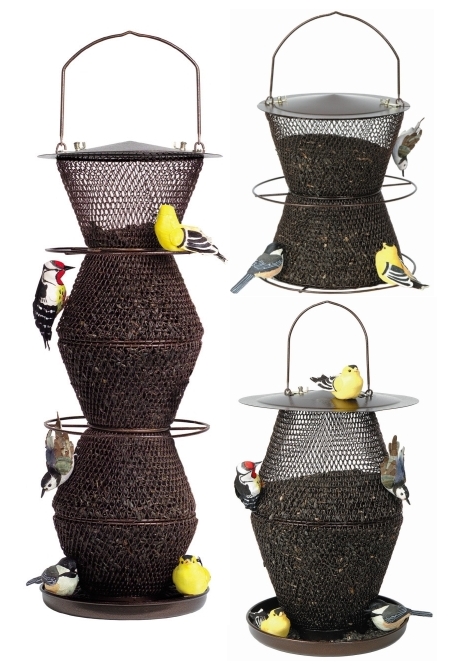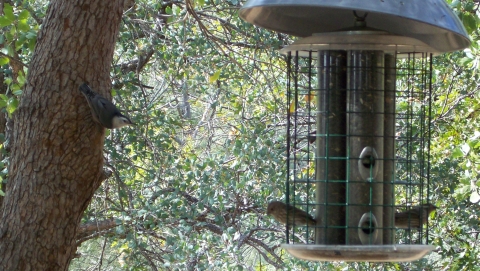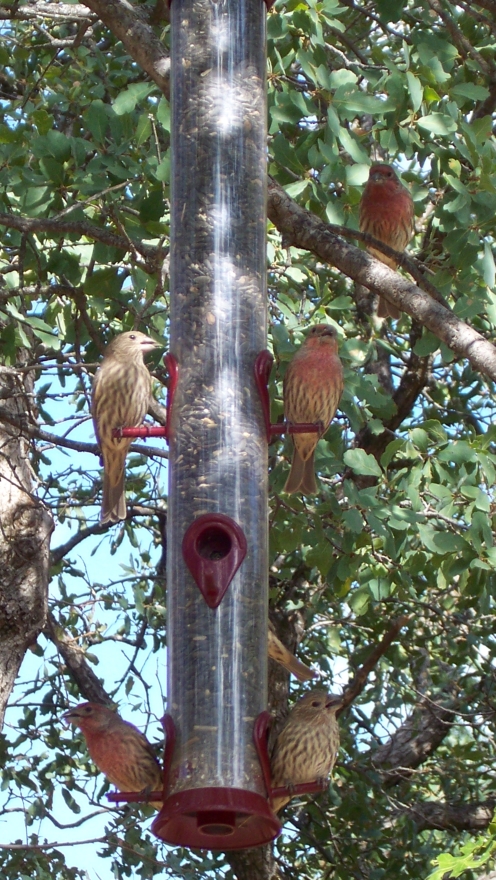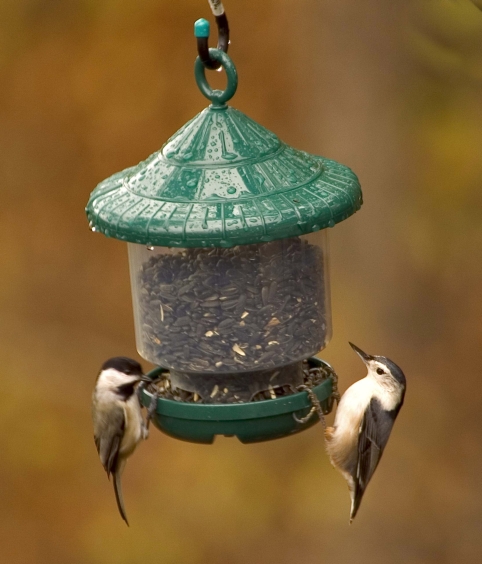White-breasted Nuthatch and House Finches at a Caged Sunflower Seed Feeder
Bird watching and wild bird feeding has become a fascinating and enjoyable pastime for many people around the world. We love watching the variety of birds visiting our homes and yards. If you are interested in setting up bird feeding stations around your home there are some things you need to know about different birds and their feeding habits as well as the different types of bird feeders available. Sunflower seed bird feeders come in many forms which serve different purposes.
The Caged Triple Tube Bird Feeder can not only be used for feeding sunflower seed but can be used for feeding three different types of seed at once. The tube parts of the feeder that hold the seed are fitted with metal ports (on the quality tube feeders) that will help stop house sparrows from raiding your feeder. Also the cage around the tubes keeps your sunflower seeds safe from the larger birds like Jays and Grackles and keeps the squirrels out. Single Tube Caged Bird Feeders are also available if you want to feed only sunflower seed or one type of bird feed.
Single Tube Sunflower Seed Bird Feeder
These sunflower seed tube feeders are loved by Chickadees, Evening Grosbeaks, Titmice, Nuthatches, Jays, House Finches, Purple Finches, Redpolls, Woodpeckers and Cardinals. If you want to restrict their use to smaller birds use a tube feeder without a tray. If you use one without perches, as shown below, you will restrict the feeder use to only birds that can cling like finches, chickadees, nuthatches, titmice and small woodpeckers.
Clingers Only Sunflower Seed Bird Feeder
There are sunflower seed bird feeders that are constructed of wire mesh also. These sturdy feeders are squirrel resistant because they are made entirely of metal. No plastic and no wood. Some hold as much as 6 pounds of sunflower seed. There are several different designs of wire mesh feeders, some with perch rings and trays, some without (please excuse the images below but I wanted you to see what the feeders look like).
So the first thing you need to do when deciding on which types of feeders to use for your bird feeding station is to decide which species of birds you want to attract to your yard. If you don’t know what species of birds live near you, check with your local Audubon Society. They should have a list of birds for your specific area.
Read up on the wild birds that live in your neck of the woods, or grasslands, or desert, or even in your city, and decide which birds you want to watch, close up. Many songbirds prefer sunflower seed because of its high fat content. Sunflower seed bird feeders take advantage of this, offering you the biggest bang for your buck considering the number of different wild bird species that will be attracted to these feeders.
If you want more insight into choosing the right bird feeder for your situation, you can subscribe to my email list and receive my four part mini course on “How To Create An Inviting Habitat For Birds” or you can email me at Larry@TheBirdersReport.com and I will be happy to help you. I will be writing future posts on other bird feeder designs in the upcoming weeks so that you can become familiar with the different uses for each type of feeder and which bird species you can expect to attract with them. Until then, Happy Birding!












Comments on this entry are closed.
We use a triple tube feeder and love it. It is mostly squirrel-proof and there are so many beautiful finches.
Hi Bird Lover, thanks for stopping by with a comment. We get many visitors to our triple tube feeder including, house finches, purple finches, evening grosbeaks, white-breasted nuthatches, red-breasted nuthatches, oak titmice, acorn woodpeckers, American goldfinches and lesser goldfinches.